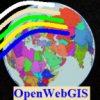- 4 replies
- 2,251 views
- Add Reply
- 5 replies
- 6,619 views
- Add Reply
- 1 reply
- 1,586 views
- Add Reply
- 2 replies
- 10,000 views
- Add Reply
- 17 replies
- 5,361 views
- Add Reply
How to calculate percent cloud cover on satelite image
By foxy1989,

Hello GIS Area,
I am a student at the specialty of photogrammetry and remote sensing, and as I got a task to calculate the percent coverage photos of clouds.
I tried to do this by a supervised classification unfortunately this is not efficient if anyone has any idea how to do this.
Photo from satellites WorldView-2 multispectral.
Available on the university ERDAS 2013, ArcGIS and eCognition.
Please help
Regards
Creating a Time series NDVI map
By PROBERT,
I would like to create a NDVI Time Series map? How do I do that? The one I probably would like to have similar like this http://proceedings.esri.com/library/userconf/proc02/pap0593/p05931.jpg
I created many NDVI for each or several months from the year of 2002 to 2013?
1) Do I need to add monthly NDVI to create an output monthly NDVI file and then the next step is to take new output monthly NDVI to produce a new output one year file?
(or)
2) Add all the NVDI from one year to generate a
An OWA model example using arcmap

By am2,
Hi,
I have a presentation about owa model and its impemention using arcmap..Can some one give me a tutorial or an example with its data that I can use it in my presentation?
Thanks a lot
ArcGIS 10.2.2 set back system clock problem

By bambosma,
Hi,
I have change systems clocks time and ArcGIS 10.2.2 return the following massage:
License
The system clock has been set back more than 24 hours
Has any one faced the same problem and found a solution?
Thanks
Please test a new online GIS based on geoserver and openlayers

By openwebgis,
For everyone who wishes to see a new open GIS called OpenWebGis and make comments and suggestions. It is a completely free project without advertising. After registration, if it is necessary, you can upload your data to be stored on the server OpenWebGis, but most of the calculations can be performed even if the data is not uploaded to the server (if it is not very bulky - about 10 thousand items in the layer). You can use the extensive mathematical functionality to calculate and analyze your da
-
Forum Statistics
8.7k
Total Topics43.4k
Total Posts




